Devices protected from liquid ingress when completely immersed in a fluid for measuring liquid level and converting it to an electrical signal to send to other instrumentation.
Products
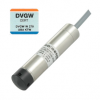 LMP307 Submersible Level Transmitter - Submersible level transmitter for measuring liquid level with a 4-20mA current loop or a 0-10V voltage output plus optional ATEX approval for intrinsically safe use in hazardous areas in ranges from 1mH2O up to 250mH2O. The LMP307 is suitable for use on potable water with no leaching, and can be supplied with a drinking water certificate according to DVGW and KTW.
LMP307 Submersible Level Transmitter - Submersible level transmitter for measuring liquid level with a 4-20mA current loop or a 0-10V voltage output plus optional ATEX approval for intrinsically safe use in hazardous areas in ranges from 1mH2O up to 250mH2O. The LMP307 is suitable for use on potable water with no leaching, and can be supplied with a drinking water certificate according to DVGW and KTW.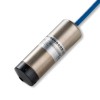 LMK458 Marine Approved Hydrostatic Level Transmitter - Marine approved level transmitter with 4-20mA output for measuring level of contents inside ship ballast, fuel, liquid cargo or wastewater tanks
LMK458 Marine Approved Hydrostatic Level Transmitter - Marine approved level transmitter with 4-20mA output for measuring level of contents inside ship ballast, fuel, liquid cargo or wastewater tanks
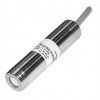 LMK307 Submersible Waste Water Level Sensor
LMK307 Submersible Waste Water Level Sensor 18.605 G Low Cost Submersible Diesel Fuel and Water Tank Level Sensor
18.605 G Low Cost Submersible Diesel Fuel and Water Tank Level Sensor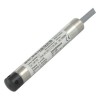 LMP305 Borehole Level Transmitter
LMP305 Borehole Level Transmitter DCL 531 Modbus RTU RS 485 Submersible Stainless Steel Liquid Level Sensor
DCL 531 Modbus RTU RS 485 Submersible Stainless Steel Liquid Level Sensor
Applications
 Borewell water level sensor for 100m water height - Low cost solution to measuring the water level in a borewell with a water height of as much as 100 metres above the submerged sensor
Borewell water level sensor for 100m water height - Low cost solution to measuring the water level in a borewell with a water height of as much as 100 metres above the submerged sensor 200m deep well pump water level sensor, switch & display - We need to measure the water level in a well down to 200 meters to protect a well pump by ensuring that it always stays under water
200m deep well pump water level sensor, switch & display - We need to measure the water level in a well down to 200 meters to protect a well pump by ensuring that it always stays under water Contaminated groundwater submersible plastic body 5 psi pressure transducer & display - This submersible pressure transducer and display can be used by landfill site pump techs to read leachate water level above the transducer at the well head.
Contaminated groundwater submersible plastic body 5 psi pressure transducer & display - This submersible pressure transducer and display can be used by landfill site pump techs to read leachate water level above the transducer at the well head.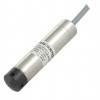 -5…+50degC temperature and 10m range level dual 4-20mA submersible borehole transmitter - A submersible water temperature and level measurement transmitter for submerging in a borehole and measuring temperature over -5 to +50C, and depth down to 10m, from the nose cone, and sending each measurement with a separate 4-20mA signal through the submersible cable electrical connection.
-5…+50degC temperature and 10m range level dual 4-20mA submersible borehole transmitter - A submersible water temperature and level measurement transmitter for submerging in a borehole and measuring temperature over -5 to +50C, and depth down to 10m, from the nose cone, and sending each measurement with a separate 4-20mA signal through the submersible cable electrical connection.
 Potable water underground 10ft dia storage tank temperature and level sensor
Potable water underground 10ft dia storage tank temperature and level sensor Lightning protected submersible level sensor for hydroelectric intakes and rivers
Lightning protected submersible level sensor for hydroelectric intakes and rivers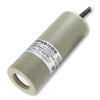 2m range 0.6% conc. chlorine liquid level sensor
2m range 0.6% conc. chlorine liquid level sensor Hot leachate level transmitter for 20m deep well monitoring on landfill sites
Hot leachate level transmitter for 20m deep well monitoring on landfill sites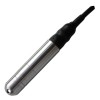 50m seawater depth and temperature sensor with SDI-12
50m seawater depth and temperature sensor with SDI-12 2 metre deep diesel tank level sensor for submersion
2 metre deep diesel tank level sensor for submersion Submersible oil pressure sensor alternative to Ashdown CNS
Submersible oil pressure sensor alternative to Ashdown CNS 2 meters of freshwater depth, submersible pressure transmitter
2 meters of freshwater depth, submersible pressure transmitter
- Diesel exhaust fluid tank level sensor for fleet storage
- Cement plant process water basin level sensor
- Stilling well 3ft range SDI-12 interface lake water level sensor
- Fleet management system submersible 3000mm height petrol tank level ATEX rated pressure sensor
- Floating dry dock ballast tank 14ft range 4-20mA output submersible seawater level sensor
- Irrigation water channel and storage dam 10m range SDI-12 submersible level sensor
- Filtered rainwater cistern 13ft range 4-20mA submersible drinking and cooking water level sensor
- 120in range 0-5Vdc output submersible river depth sensor
- Drinking water approved 5ft range 4-20mA output submersible reservoir level sensor
- Desalination plant seawater feed tanks 5m range 4-20mA output submersible level sensor
- 10ft range 4-20mA output submersible sea tide depth sensor
- 40m RS485 Modbus RTU submersible borehole pump drawdown depth sensor
Product Types
 Detachable Cable Submersible Liquid Level Sensor Probes - Sensor probes with removable submersible signal cable for measuring liquid level. These sensor probes can be easily replaced without the need to remove the installed cable assembly or break connections to cable junction boxes and termination enclosures.
Detachable Cable Submersible Liquid Level Sensor Probes - Sensor probes with removable submersible signal cable for measuring liquid level. These sensor probes can be easily replaced without the need to remove the installed cable assembly or break connections to cable junction boxes and termination enclosures. Landfill Site Submersible Leachate Level Transmitters - Sensing transmitter devices protected from liquid ingress when completely immersed in a leachate for measuring leachate level and converting it to a 4-20mA current output signal to send to other instrumentation on a landfill site used to bury waste material.
Landfill Site Submersible Leachate Level Transmitters - Sensing transmitter devices protected from liquid ingress when completely immersed in a leachate for measuring leachate level and converting it to a 4-20mA current output signal to send to other instrumentation on a landfill site used to bury waste material. Sea, Brackish or Salt Water Submersible IP68 Depth & Level Sensors - IP68 rated transmitters and transducers suitable for use with tidal and coastal salt water.
Sea, Brackish or Salt Water Submersible IP68 Depth & Level Sensors - IP68 rated transmitters and transducers suitable for use with tidal and coastal salt water.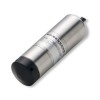 Submersible Hydrostatic Level Sensors & Probes - Level sensors for submerging permanently in liquid to determine the level or depth of fluid by measuring the hydrostatic pressure.
Submersible Hydrostatic Level Sensors & Probes - Level sensors for submerging permanently in liquid to determine the level or depth of fluid by measuring the hydrostatic pressure. Submersible Diesel Tank Level Sensors - Diesel fuel oil storage tank device for measuring liquid level and converting it to an electrical signal to send to other instrumentation protected from diesel ingress when completely immersed in the fuel oil.
Submersible Diesel Tank Level Sensors - Diesel fuel oil storage tank device for measuring liquid level and converting it to an electrical signal to send to other instrumentation protected from diesel ingress when completely immersed in the fuel oil.
A submersible device can be installed in liquid without causing any damage as long as the installation instructions are adhered to, and the specified depth and time duration limits for submersion are not exceeded.
Assembled devices are vulnerable to liquid ingress, which can enter the device through seals and joints or permeate through components that incorporate thin membranes or porous materials.
To achieve a long lasting submersible construction, the device is constructed from materials which will not easily corrode when exposed to a fluid. Corrosion may cause the material to fail and allow liquid to enter the device, or interfere with the seal joining the corroded material to another component.
The seals used to join device components together are pressure leak tight, resilient to the expected temperature variations and resist corrosion from the surrounding fluid.
All components and seals are designed to withstand the pressure expected at the maximum required liquid depth, and this may involve a series of seals and backfilling with a potting compound or other fill material to improve longevity and reliability at greater depths.
A liquid level sensor is an instrument for measuring the height of a liquid and converting it to an electrical signal which is sent to other instrumentation to display, monitor, log or control the liquid level. The probe is lowered into the tank and immerse in the liquid. A typical sensor technology employed is a pressure sensor which will measure the pressure generated by gravity acting on the surrounding liquid.
